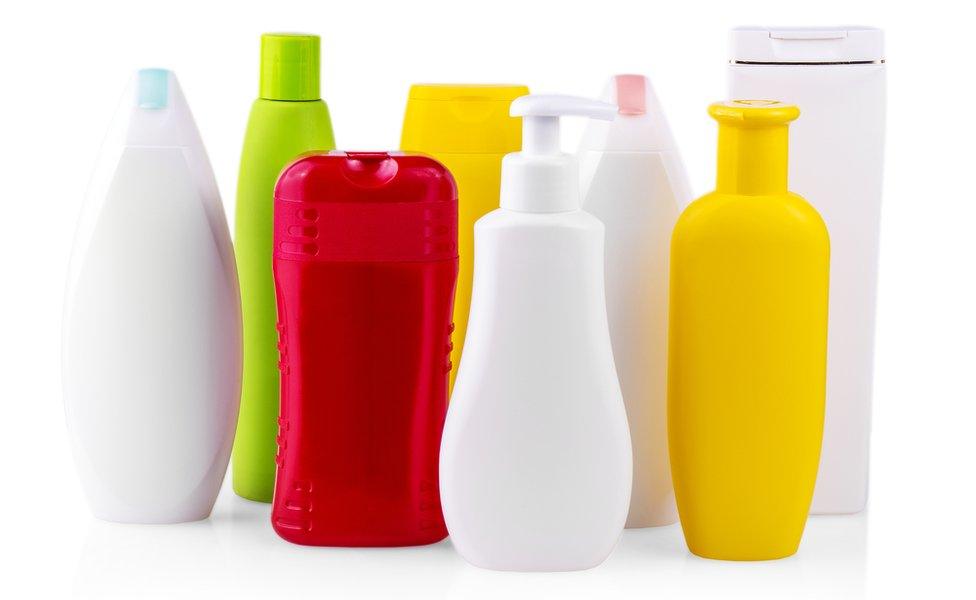Consumer products' air quality impact 'underestimated'
- Published
- comments

US research has found that chemicals in everyday household products are now a key contributor to city air pollution, rivalling some vehicle emissions.
The study, led from Colorado University, focussed on so-called volatile organic compounds (VOCs).
These are contained in petroleum-based products such as cleaning fluids and paints, and when they get into the air can form particles that affect health.
The scientists say the sources of non-vehicle VOCs have been underestimated.
This appears a somewhat surprising result because by weight, we use far more fuel than we do these other chemical products.
'Reduce your use'
About 95% of raw oil goes into the production of fuels, whereas roughly only 5% is refined for use in chemicals that are included in the likes of deodorants, pesticides, and adhesives.
But Dr Jessica Gilman said it should not be seen as that remarkable because vehicle fuels are burned (to yield mostly carbon dioxide and water), whereas many of the household products are simply wafted into the air by design.
"Most commonly, they're used as solvents - things like nail polish remover, the hairspray I used this morning; they are used in many cases as cleaning agents like carpet cleaners," the National Oceanic and Atmospheric Administration scientist told reporters.
"It would be difficult to remove them because the alternative is to use straight water, which as you know doesn't work for all stains."
One of Dr Gilman's colleagues, Dr Brian McDonald, did however suggest that reduced use would be helpful.
"Use as little of the product as you can to get the job done," he said.

By Roger Harrabin, BBC Environment Analyst
The air we breathe contains such a diverse mix of compounds it's impossible for researchers to be sure what chemical is causing what problem.
And there's an even trickier issue - setting pollution limits that are appropriate for everyone. Air fresheners are loved by some people - but they make others choke. Cleaning sprays are useful - but they make some people's eyes run. I know someone whose childhood asthma is thought to have been provoked by chemical emissions from flat-packed furniture in his bedroom.
This is a neglected field of research as public and media attention has focused on cars outdoors at the expense of chemicals indoors.

The researchers pulled together a wide range of information for their study.
They looked again at what manufacturers put in their products; they reviewed the statistics held by regulatory agencies; they flew atmospheric sampling missions above Los Angeles to examine the air chemistry; and they also evaluated indoor and outdoor air quality measurements collected by other researchers.
The team concluded that in the US, the amount of VOCs emitted by consumer and industrial products is very probably two or three times greater than estimated by current air pollution inventories. (There are also natural sources of VOCs in the environment.)
They add that these inventories likely also overestimate the motor vehicle sources.
'Good news'
The researchers cite as an example the current estimates from the US Environmental Protection Agency.
The EPA considers that about 75% of petroleum-based VOC emissions come from vehicle fuels, and roughly 25% from chemical products.
The Colorado reassessment puts the split closer to 50-50.
"The use of these products emits VOCs in a magnitude that's comparable to what comes out of the tailpipe of your car. One of the main reasons for this is that in the US, as well as in Europe, air quality regulations have been really successful at controlling emissions from motor vehicles," said Dr McDonald, who is affiliated to the Cooperative Institute for Research in Environmental Sciences (CIRES) in Colorado and is the lead author on the study.
"In some ways, this is a good news story that, as we control some of the bigger sources in the past, the other sources are emerging in relative importance, such as these consumer products."
Experts say the results of this research are broadly applicable to other industrialised nations, including those in Europe.

Los Angeles: For these particular types of compound, motor vehicles are not the only culprit
Anthony Frew, a professor of respiratory medicine at Brighton & Sussex Medical School in the UK, commented: "This research is a useful reminder that discussions of air pollution need to consider all sources of pollutants and that measures targeting cars only address part of the problem.
"Engineering changes to car exhausts have dramatically reduced the amount of pollution produced per mile, meaning that (a) there is now less to be gained from further changes to cars and (b) the public need more information on how their activities, apart from driving, contribute to current pollution levels."
Vehicles emit pollutants beyond just VOCs, of course. These include nitrogen oxides (NOx). Indeed, it is the reaction between the NOx and the VOCs that produces some of the particles of most health concern.
The Colorado study is published in Science Magazine, external. It was also presented on Thursday to the annual meeting of the American Association for the Advancement of Science, external in Austin, Texas.
Jonathan.Amos-INTERNET@bbc.co.uk, external and follow me on Twitter: @BBCAmos, external